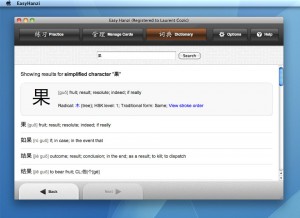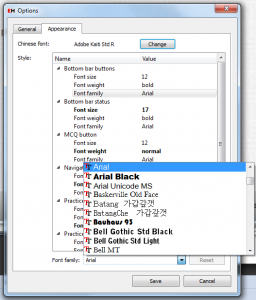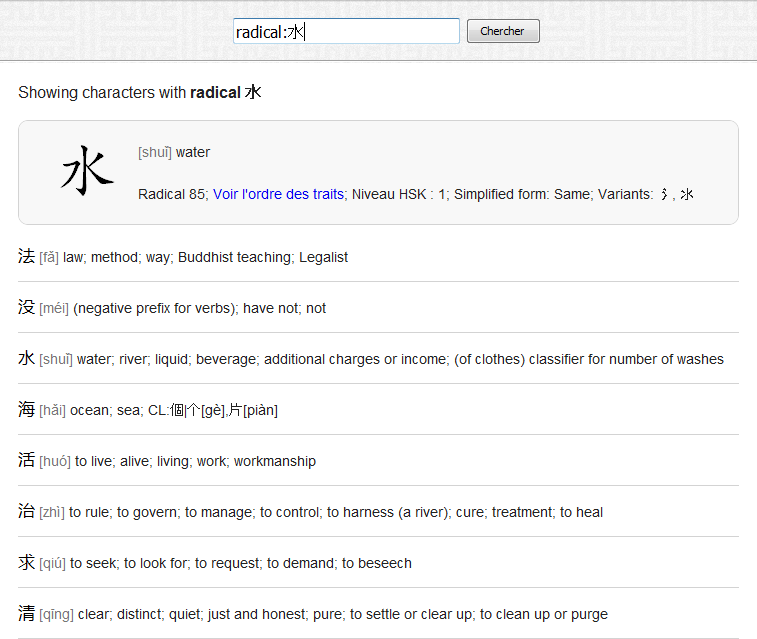Version 3.1 of Easy Hanzi has just been released. This version includes lots of new features and improvements over version 2.
MCQ and Type-in questions
Easy Hanzi now includes three types of session: beside the default session type (now renamed “self-assessment”), there are now multiple-choice questions and type-in questions.
During an MCQ session, you are shown a card where the pinyin, Chinese characters or definition is missing. You then need to choose, among the proposed options, which one is the correct answer.
A “type-in” session is similar, except that your directly write down the answer – either the Chinese characters or pinyin, or the definition. Since most words and Chinese characters have more than one definition, the software will count as a good answer if you provide one correct definition.
Share and print your Chinese flashcards
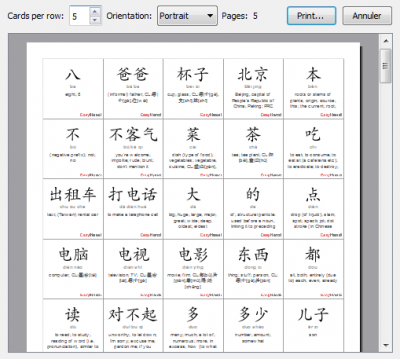
Easy Hanzi now lets import and export flashcards so that you can share them easily. The Chinese flashcards themselves can be shared but also the spaced repetition score data, which is useful to transfer the decks from one computer to another, or simply to backup the decks.
Another new feature is the possibility to print a deck of Chinese flashcards. Simply right-click on a deck and select “Print”. A convenient dialog box will let you choose how many Chinese flashcards per sheet should be printed. The cards are clearly delimited so that you can easily cut them out.
New tree view to display the decks of Chinese flashcards
The decks are now displayed in a tree view so that you can more easily organize them, and group related decks together. Decks can be dragged and dropped and you can also drag an drop flashcards onto them.
Audio playback, Chinese character stroke animations and example sentences in dictionary
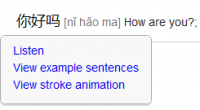
Plenty of improvements have also been done on the dictionary. The most obvious one is the new popup that shows up when you move the mouse over Chinese characters or pinyin. In there you can choose the listen to the word or sentence, or display Chinese character stroke animations. You can also display example sentences to show how the character or word should be used.
The new version is available from the download page: Download Easy Hanzi

